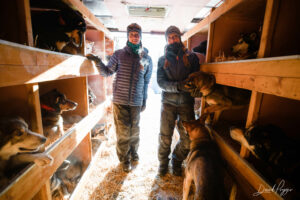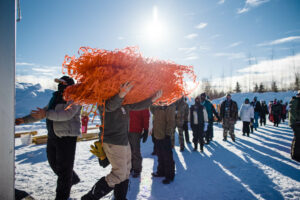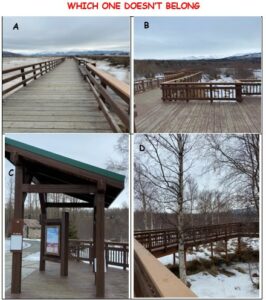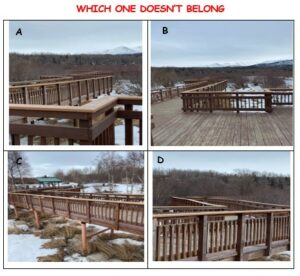Paw Print = Anchorage ~ Potter Marsh Wildlife Viewing Boardwalk
Exploration Feeling ~ Day Two = Reflective
Today we traveled to the Potter Marsh Wildlife located at the southern end of the Anchorage Coastal Wildlife Refuge with Sara Lamont. My head was spinning with a ton of math ideas as I looked at each angle of the boardwalk. The revelation of how this short field trip of so many learning opportunities that could change my teaching and my student thinking was very powerful and reflective. The power being that every day, teachers are offered real-world connective learning by just looking at what is around us. Something that I personally had forgotten about but am now reminded of. So, I will put it to the test. Below are some math ideas that teachers could use as a warm up to a math lesson. All of the images are courtesy of Potter Marsh Wildlife and Iditarod Image Gallery. I hope by sharing these ideas that I am providing math conversations to provoke critical thinking, safe risk-free answers, open-ended questioning, critiquing the reasoning of others, differentiation, and problem-solving. Enjoy learning from your students. Please be aware that you can adjust the questions based on the skill level of your students.
In your Alaska Wildlife Math Notebook, jot down your thinking and be ready to defend your answers using background knowledge of estimation and nonstandard units of measurement. Your images today are from the Potter Marsh Wildlife and the Iditarod Image Gallery. Don’t forget to think about what you cannot see in each picture.
ELEMENTARY LEVEL:
Differentiated starter questions are listed below.
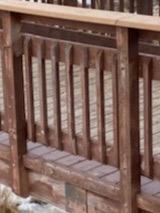 |
A view from the Potter Marsh Wildlife Boardwalk. Use the counting on strategy to count up how many legs you see in one frame shown in this picture? If you had 10 frames, how many legs would you see? What kind of shapes do you see in this frame? How would you sort the materials used to build this frame?
|
|
|
A view as a musher races down 4th Avenue. Use the counting on strategy to count up how many dogs you see on the team shown in this picture? If you could see 5 dog sled teams with this same number of sled dogs, how many would you see all together? How many paws are seen in this picture? How many paws would you see with 5 dog sled teams with the same number of sled dogs? |
MIDDLE SCHOOL LEVEL:
 |
A view from the Potter Wildlife Boardwalk If you were asked to rebuild this frame, what materials would you need and how much? Do not forget the back of the legs. How many rectangles do you see? How many rectangles would be in 5 frames? |
|
|
Anna and Kristy Berrington with dogs before the race start. How many shapes do you see? Be ready to identify and classify these shapes. Estimate the area of where each dog is housed. Estimate the total area of 16 dogs. If the housing area for the Berrington sisters were 6 times longer, what would be the total area for housing their sled dogs? What additional questions do you have to help you with your estimation? |
HIGH SCHOOL LEVEL:
 |
A view from the Potter Wildlife Boardwalk The informational center landing at the boardwalk entrance is an irregular shape. Name at least 4 irregular shapes that you see in this picture. Estimate the area of this landing. Estimate how much space one average high school student would take up on this platform. How many people can stand under the roof of this landing? (your reasoning should be rational) What additional questions do you have to help you with your estimation? |
|
|
Volunteers helping set up at the race start in Willow. Looking at the fencing held by the volunteers, estimate how long this fencing will cover at the start of Willow. Remember to use background knowledge of distance formula to calculate the distance from point a to point b. Estimate the amount of volunteers needed to set this fencing up. What additional questions do you have to help you with your estimation? |
Additional “Math Talk” Ideas ~ Which One Doesn’t Belong?
Which One Doesn’t Belong – Students will pick only one picture to explain why that picture does not belong with the others. Students should be able to explain their thinking. Support students as they justify their choice. Once students have shared, you may decide to offer students to change their original choice.
ELEMENTARY SCHOOL:
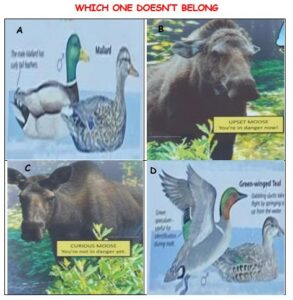
|
MIDDLE SCHOOL:
HIGH SCHOOL:
|




